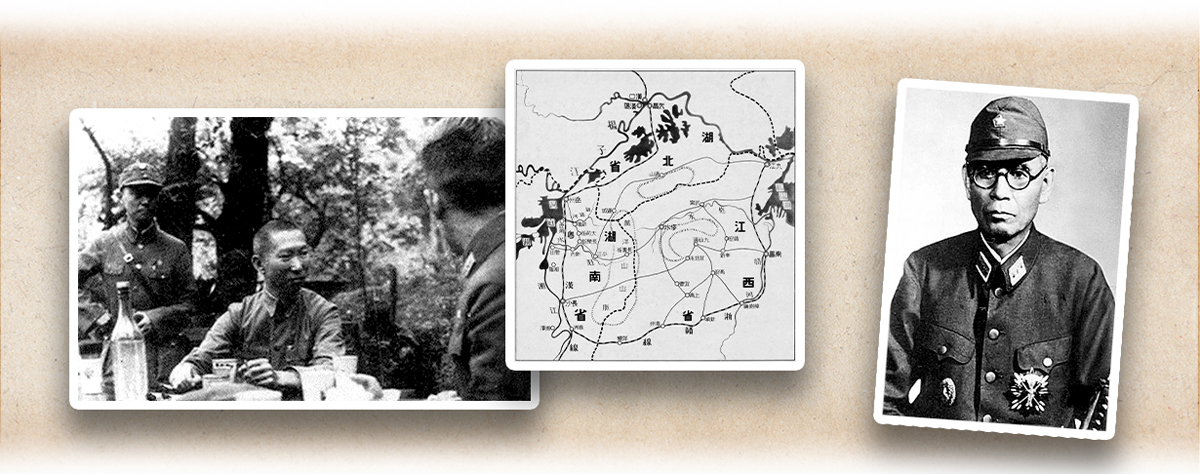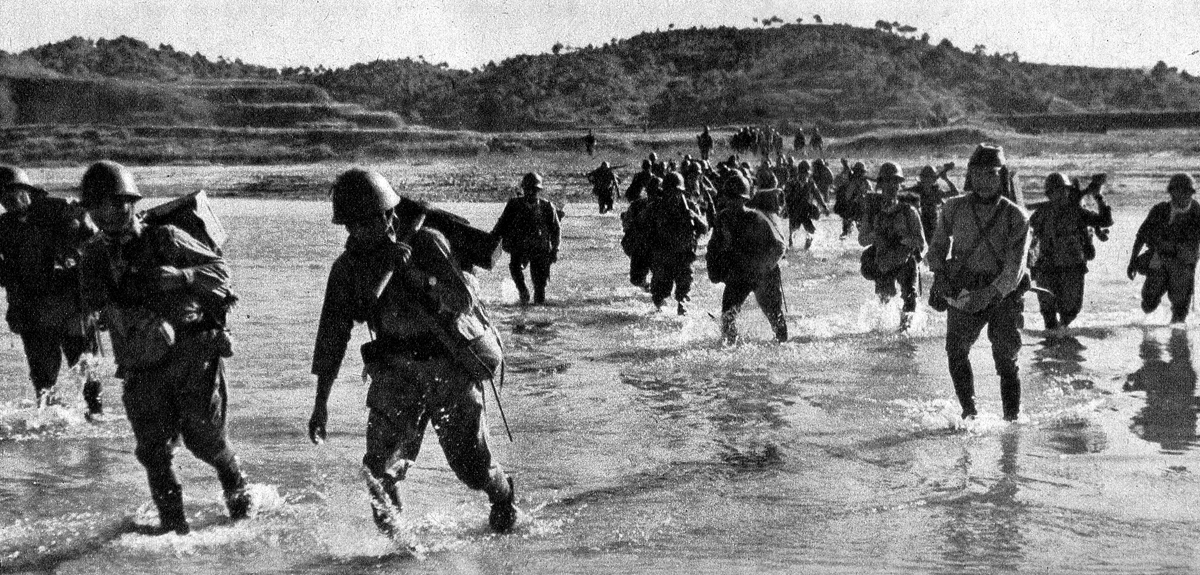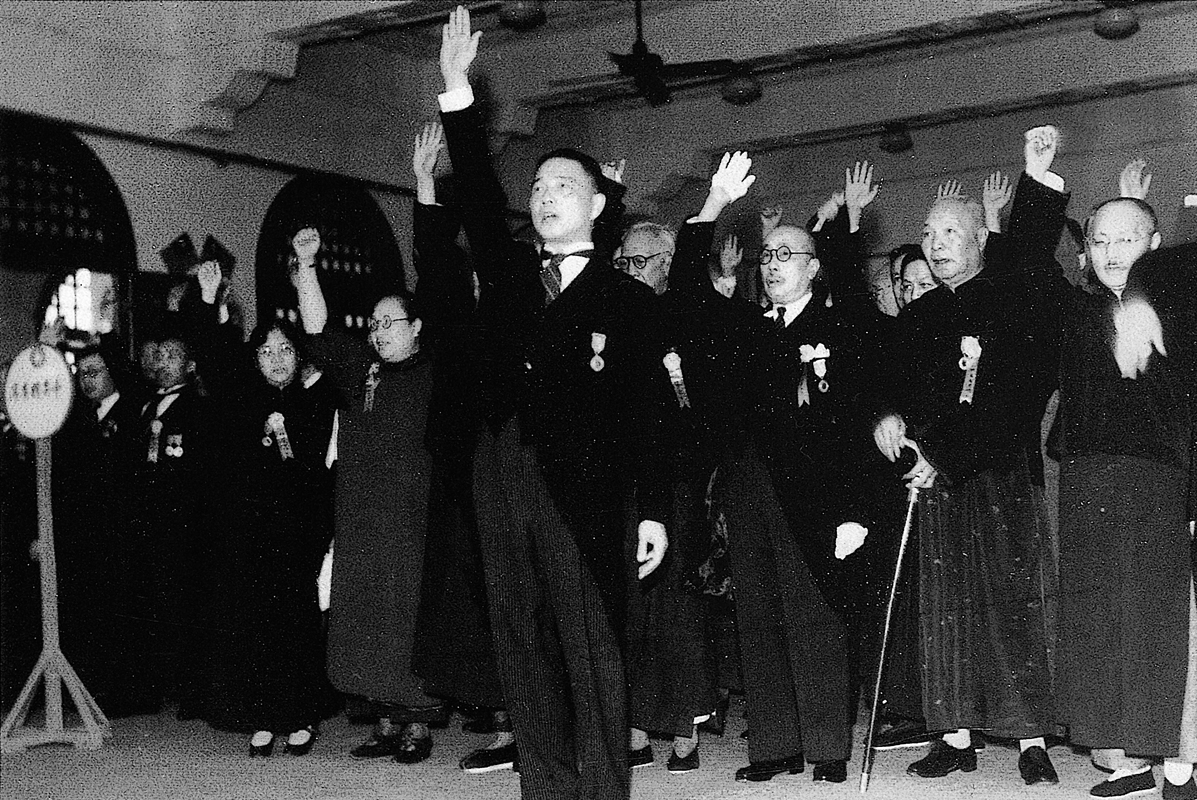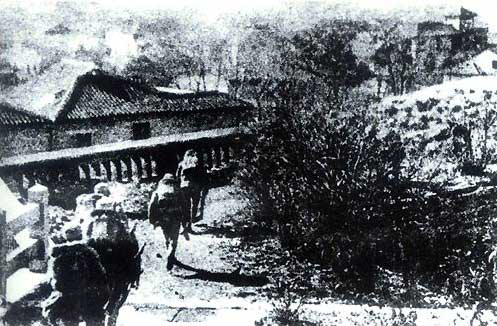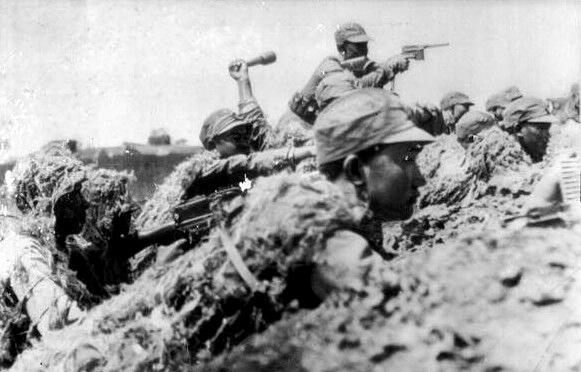The National Revolutionary Army (NRA) and the Japanese Army fought in two Battles of Changsha (長沙會戰) between the stalemate phase of the Total War of Resistance Against Japanese Aggression and the Pacific War. The first battle lasted from 13 September until 9 October 1939 when the Japanese Army hoped to follow up on the victory of capturing Whuan (武漢) and Nanchang (南昌) to occupy Hunan Province (湖南) so as to threaten the Nationalist Government in the secluded southwest. Consequently, 100,000 troops led by Commander Okamura Yasuji attacked Changsha, the capital city of Hunan, who were engaged by 240,000 Chinese troops of the 9th War Zone (the original commander Chen Cheng﹝陳誠﹞was later replaced by Xue Yue﹝薛岳﹞on 1 October) and generals including Guan Linzheng (關麟徵), Shi Sihua (史思華), and Cao Xi (曹錫). Xue adopted the tactic of “retreating to fight for the periphery” by going with the geography of Hunan, annihilating 30,000 Japanese forces and forcing the enemy to retreat at a cost of 40,000 NRA casualties. The two sides resumed a stalemate position. Changsha became the first major Chinese city that did not fall at the first battle against the Japanese invaders.
The second battle took place between 6 September and 8 October 1941 again in the Changsha area. The 300,000 NRA troops was again led by Xue to engage the 120,000 Japanese troops led by Anami Korechika. The two sides fought bitter campaigns, including those in the streets of Changsha. For a time Japan was once very close to capture Changsha but was later forced to retreat, resuming a stalemate situation like before the battles were fought. The 9th War Zone reported that it inflicted 48,000 Japanese casualties, and shot down three warplanes and seven motorboats in the fighting. Later in 1942 and 1944, the NRA and the Japanese Army fought two more battles in Changsha.
|
|
The two Battles of Changsha were one of Xue Yue’s greatest achievements in the Total War of Resistance Against Japanese Aggression. However, in the rivalries between the Kuominatang of China (KMT, 中國國民黨) and the Chinese Communist Party (CCP, 中國共產黨), he had committed himself wholeheartedly to fighting the Red Army during the Long March and the People’s Lideration Army (PLA, 解放軍) during the full-scale civil war. What is a fair assessment for this commander? |
|
|
See answer below. |
Changsha was engulfed in a disastrous fire before the First Battle of Changsha. Left: Changsha in flames. Right: a child sitting forlornly in the rubble after the great fire.
Before the two Battles of Changsha broke out, the Hunan Provincial Government led by Governor Zhang Zhizhong (張治中) formulated a plan in accordance with the Nationalist Government’s scorched-earth policy to burn Changsha, the capital city of Hunan, to the ground when it was about to fall in Japan’s hand. In the wee hours of 13 November 1938 when most of the civilians were asleep, the entire Changsha was suddenly set ablaze without any warning and 30,000 lives were claimed. This tragedy was one of China’s biggest administrative mistakes during the War of Resistance. It was not until September 1939 that the Japanese Army actually advanced on Changsha.
Left : Xue Yue (centre), the Commander of the 9th War Zone who led the Chinese forces during the two Battles of Changsha. Middle: the military situation map on advancing North China drawn by the Japanese Army in 1939. Right: Okamura Yasuji, the Commander of the Japanese forces during the First Battle of Changsha. Okamura, a prominent commander during the Japanese invasion of China, became the Commander-in-Chief of the Japanese Expeditionary Army to China.
The Japanese forces assaulted Changsha in September 1939, which sparked off the First Battle of Changsha. The photo shows the Japanese forces crossing a river to launch an attack on 23 September 1939 during the First Battle of Changsha. The Japanese Army was frustrated and forced to retreat, which marked the end of the First Battle of Changsha in October 1939. Changsha became the first major Chinese city that did not to fall at its first battle against the Japanese invaders.
Japan sped up its policy of “using Chinese to subdue Chinese” after occupying a large part of China. On 30 March 1940 between the two Battles of Changsha, the Reorganised National Government of the Republic of China, a puppet regime led by Wang Jingwei (汪精衛, the one at the front leading the oath-taking).
Left: General Zhang Zizhong (張自忠), who achieved greatly in different campaigns including those in Xifengkou Pass (喜峰口) of the Great Wall, Taier’zhuang (台兒莊), Xuzhou (徐州), and Wuhan (武漢). Right: Zhang’s grave in Chongqing (重慶) as it stands today. The inscription of the gravestone was by Feng Yuxiang (馮玉祥) in 1942. From May to June in 1940 between the two Battles of Changsha, the NRA resisted the Japanese Army in the area of Zaoyang (棗陽) and Yichang (宜昌) of Hubei Province (河北) during the Battle of Zaoyang-Yichang. On 16 May, the Commander-in-Chief of the 33rd Group Army Zhang Zizhong died, who was the highest-ranking military official sacrificed since the War of Resistance commenced.
The 9th War Zone convened a military conference in Changsha, Hunan, to discuss the war deployment against Japanese aggression in April 1940.
The Japanese forces attacked Changsha again in September 1941. The NRA in the 9th War Zone then counterattacked against the Japanese forces who occupied the periphery of Changsha. The photo shows the NRA pursuing the Japanese forces across the Miluo River (汨羅江) during the Second Battle of Changsha.
During the Second Battle of Changsha, the NRA advancing towards the Tianxin Pavilion (天心閣) at southeast Changsha.
During the Second Battle of Changsha, the NRA resisting the Japanese Army with guns and grenades. Japan was defeated again in this battle.
After the Second Battle of Changsha was concluded, a memorial for the 9th War Zone martyrs sacrificed during the battle was held at the foot of Yuelu Mountain (岳麓山) in Changsha, Hunan.
|
|
The two Battles of Changsha were one of Xue Yue’s greatest achievements in the Total War of Resistance Against Japanese Aggression. However, in the rivalries between the KMT and the CCP, he had committed himself wholeheartedly to fighting the Red Army during the Long March and the PLA during the full-scale civil war. What is a fair assessment for this commander? |
|
|
When analysing historical events and figures, one should adopt an objective approach, and carry out specific analyses on specific issues. It is not suggested to hold an absolute stance towards any historical events and figures. As a military officer, Xue Yue took up a heavy burden during a time of national crisis and led the Chinese forces at the two Battles of Changsha. He once even refused the order to retreat from the city and mounted a strenuous defence that dealt heavy blows to the enemy. These achievements cannot be denied. As for his suppression of the CCP forces before and after the War of Resistance, one should take into consideration the long history of the unstable KMT-CCP relations. The two parties were initially an alliance to fight against imperialism, warlords, and Japanese invasion. However, they turned against each other again for ruling the country once the national victory was achieved. Most members upheld the benefits of their own party, and so one cannot repudiate their actions based solely on their party background. |
Source of most photos used in this feature piece: Fotoe and misc. photo sources.






